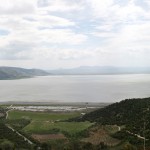MedWet Culture Network

The MedWet Culture Network is a product of collaboration between MedWet (a regional Ramsar initiative) and Med-INA
MedWet
Established in 1991, the Mediterranean Wetlands Initiative brings together 26 Mediterranean and peri-Mediterranean countries that are Parties to the Convention on Wetlands (Ramsar, Iran, 1971), as well as the Palestinian Authority and a number of organizations and wetland centres. The MedWet mission is to ensure the effective conservation of the functions and values of wetlands and the sustainable use of their resources and services, within the framework of the Ramsar Convention.
For more information, visit the MedWet website.
Ramsar Convention
Through the 1960s, countries and non – governmental organisations concerned about the increasing loss and degradation of wetland habitat for migratory waterbirds negotiated a treaty for their protection. It was adopted in the Iranian city of Ramsar in 1971 and came into force in 1975. The Convention’s mission is “the conservation and wise use of all wetlands through local and national actions and international cooperation, as a contribution towards achieving sustainable development throughout the world”.
For more information, visit the Ramsar website.
Med-INA
Med-INA is a non-profit organisation, established in 2003. Its mission is to contribute to a harmonious relationship between Anthropos (Mankind) and Nature, by working on their relations, through research, action and public awareness focusing mainly in the Mediterranean. It aims to develop an integrated approach to the management and conservation of the natural and cultural heritage, and to encourage a greater integration among the interacting components of sustainability -culture, environment, society and economy.
For more information, visit the Med-INA website.
Wetlands and Culture in the Mediterranean
Wetlands: land areas which are saturated with water, permanently or seasonably, and take on the characteristics of a distinct ecosystem as a result.
Culture: a property of human groups and societies which expresses aspects of their identity, shared values, attitudes, beliefs, knowledge systems, creativity and other practices. Culture conditions the ways in which people interact with one another and with their environment. It can be exhibited in both material and non-material ways, and is constantly evolving.
In the Mediterranean: the Mediterranean has been inhabited for millennia and maintains a very strong cultural heritage relating to its wetlands and water resources.
MCN Mission
“The creation of the MedWet Culture network is important in an area as diverse and culturally rich as the Mediterranean—a region where major civilisations and even cities have developed and been built in and around wetlands. The network will ultimately promote the protection of wetlands through culture and the preservation of culture relating to wetlands.”
MedWet has been interested in the cultural aspects of wetlands since the late 1990s. In January 2009, the MedWet Steering Group approved the establishment of a MedWet Culture Network, an open forum with the following objectives:
- – to spread awareness of the cultural values of Mediterranean wetlands among managers, decision makers, experts and the public
- – to monitor developments relating to culture and wetlands around the Mediterranean
- – to provide a means for sharing information
- – to give advice and provide guidance
- – to assist in the implementation of Ramsar Guidance on Culture and Wetlands and other initiatives related to culture to encourage cooperation among relevant institutions, wetland sites and experts
in alignment with the work of the Ramsar Culture Network.
Cultural Aspects of nature
The cultural aspects of nature describe every attribute that relates the environment to the human agent and include every parameter of its expression. Such examples may be tangible or intangible and may refer, for example, to the use of water for irrigation, tourism, land cultivation, or fishing. Since not all uses are beneficial to the natural environment, and since all uses are dependent on the way they are practiced, in the context of nature conservation and management references to the cultural aspects of nature denote those practiced in a sustainable manner.
To facilitate our understanding of the cultural aspects of wetlands and their recording, MedWet Culture uses the methodology described in the Ramsar Guidance on culture and wetlands. According to the Guidance, wetland cultural aspects can be grouped under four categories:
– Habitation
– Primary uses of wetland resources
– Secondary uses of wetland resources
– Knowledge, belief systems and social practices.
For more information on the cultural aspects of wetlands, click here.


